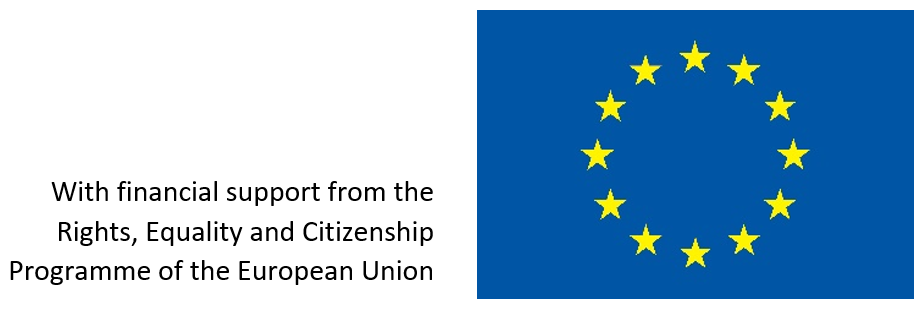“It was only thanks to the women’s movement that the women members of the resistance came back into focus.”
On Tuesday, 8 May 1945, when the Allies accepted the unconditional surrender of Germany’s armed forces, World War II in Europe ended. In commemoration of what is celebrated as ‘Liberation Day’ in many European countries, today’s Inspiring Thursday post will shed some light on a topic that has only started to be acknowledged in recent years: The role of women in resisting the Nazi Regime and Fascism.
Remembering Women in the Resistance
Apart from Sophie Scholl, whose sister Inge wrote the first book to describe German resistance to the Nazi regime about her siblings Sophie and Hans called “The White Rose” (Die Weiße Rose) in 1952, female resistance has not been examined in detail for a long time.
The reasons for this lie, as is so often the case, in patriarchal norms and role attributions undermining and denying female agency: The images of women and resistance, of women interfering in politics and having their own opinions simply did not fit together in the eyes of (predominantly male) politicians, historians or journalists, whether during or after the war. The idea that “the woman’s task is to be beautiful and to bring children into the world” and that her place is in the supposedly private realms of the home existed before the Third Reich – and it didn’t just disappear with the end of the Nazi era.
It is not surprising then, that many of the female resistance fighters who were at least mentioned in the historiography were portrayed as a kind of appendix, as “wife, fiancée, friend of”, without their actions actually being recounted and appreciated.
Additionally, many women resistance fighters were/are not remembered in the post-war memory due to their private political opinions and history: Many of them came from socialist homes, had grown up in communist youth groups or belonged to the Socialist Workers’ Party. In times of the Cold War, such biographies did not fit into the West German view of the resistance.
Johannes Tuchel, director of the German Resistance Memorial Center, states that:
“It took a long time for the resistance of workers, communists or exiles to be recognized. Until well into the 1980s, there were sometimes heated discussions about what should be counted as resistance to the National Socialists. Today, we include everything that weakened the system, all people who tried to do something against the dictatorship. For Germans after 1945, this was difficult to acknowledge. If someone resisted, then he [sic!] stood for an alternative course of action. For the fact that one would not have had to go with Hitler and the NSDAP, but would also have had a choice. And admitting that was, of course, very difficult for many people after 1945.”
Female Members of the White Rose and the Red Orchestra
Back to Sophie Scholl and the White Rose, which is considered the best-known and most symbolic example of student-citizen resistance to the Nazi regime in Germany until today. According to Barbara Distel, former head of the Dachau concentration camp memorial site, “it was only thanks to the women’s movement that the women members of the resistance came back into focus.” The stories of other women who risked their life as part of the group only became public later, such as:
- Traute Lafrenz (*1919), who, after meeting Alexander Schmorell (co-founder of the White Rose) in Hamburg, took part in many of the group’s conversations and discussions and brought the third White Rose leaflet to Hamburg in November 1942. Along with Sophie Scholl, Traute Lafrenz obtained paper and envelopes for dispatching more leaflets in January 1943. She was arrested by the Gestapo twice. On April 15th 1945, she was liberated from prison by American troops and emigrated to the US in 1947.
- Margaretha Rothe (*1919, †1945), who printed and distributed leaflets with frequencies and broadcasting times of foreign radio stations as a medicine student in Hamburg. She became part of the Hamburg White Rose circle in 1941 and was arrested together with 30 others in 1943. She died in a Gestapo women’s prison due to pulmonary tuberculosis in 1945.
- Hannelore Wilbrandt (*1923, †2003), who grew up in a Social Democratic family and met Heinz Kucharski and Margaretha Rothe in mid-1942, who were customers at the bookshop where she worked. They received the third White Rose leaflet at the beginning of 1943 by Traute Lafrenz. Willbrandt transcribed the leaflet and the Erich Kästner poem “Little Marching Song” and distributed the copies together with Albert Suhr. She was first arrested by the Gestapo in December 1943 and spent 10 months in solitary confinement. She and other Hamburg White Rose members were prosecuted before the “People’s Court” on February 23, 1945 for “preparation for high treason, aiding the enemy, subverting the war effort, and radio crimes.” Hannelore Willbrandt was liberated in Bayreuth by the U.S. Army on April 14, 1945.
Other female members and supporters of the White Rose were Maria and Katharina Leipelt, Ilse Ledien, Anneliese Graf, Katharina Schüddekopf, Lieselotte “Lilo” Ramdohr, Marie-Luise Jahn, Gisela Schertling and Lieselotte “Lilo” Dreyfeldt.
In Berlin, too, many women in the resistance put their lives on the line to protect the persecuted. A loose network of resisters called the Red Orchestra (Rote Kapelle) by the Nazis helped the persecuted, obtained ration cards, documented the crimes of the Nazi regime and went public with leaflets. Of the roughly 400 members and supporters, more than 65 were murdered, including at least 19 women. Among them were Ilse Ströbe, Libertas Schulze-Boysen and Elisabeth Schumacher.
Resistance and Gender Stereotypes
In some cases, women in the resistance benefited from traditional gender roles: they were taken less seriously and less frequently sentenced to death. Historians have collected examples in which the Gestapo and judges treated women more leniently because they supposedly lacked political awareness. Margot Linsert, for instance, in whose shop the International Socialist Combat League met, was let go in 1938 by the Gestapo, stating that she was an “ignorant mother”, while her husband was arrested with the same charges.
On the other hand, women from the resistance were not necessarily feminists. According to Barbara Distel, they were confined to traditional gender roles like other women. So, just as they bravely fought until 1945, most of them quietly withdrew to their private lives when the war ended.
One example is Centa Herker-Beimler (*1909, †2000), who as a communist had already clashed with the Nazis in Munich during the 1920s, at age 17, and handed out leaflets against the regime when she was 24. She was arrested several times for a total of four years, but was released after her husband had died fighting Franco in Spain. When communists in Munich avoided her so as not to be targeted by the Gestapo as well, she went to Augsburg to establish contacts and build up an anti-fascist group there.
Distel points out that “the woman who was not intimidated by the Nazis had been completely dominated by her husband: the two were not yet married when she started taking care of the children from his first marriage, gave up her job in Hamburg and moved back to Munich. She also retreated to private life after the war: she organized sewing parlors and cared for the sick. She was involved in bringing together people persecuted by the Nazi regime — but […] she did not act as spokesperson. Instead, she stayed on the sidelines and took care of the bookkeeping.”
Written by WAVE Intern Verena Henneberger
Sources:
Widerstand zur NS-Zeit: Frauen gegen Hitler | MDR.DE
The Women Who Opposed Hitler And Why They Were Forgotten – Worldcrunch
Widerstand gegen NS-Diktatur: “Langer Prozess von der Ächtung zur Ehrung” – ZDFheute






